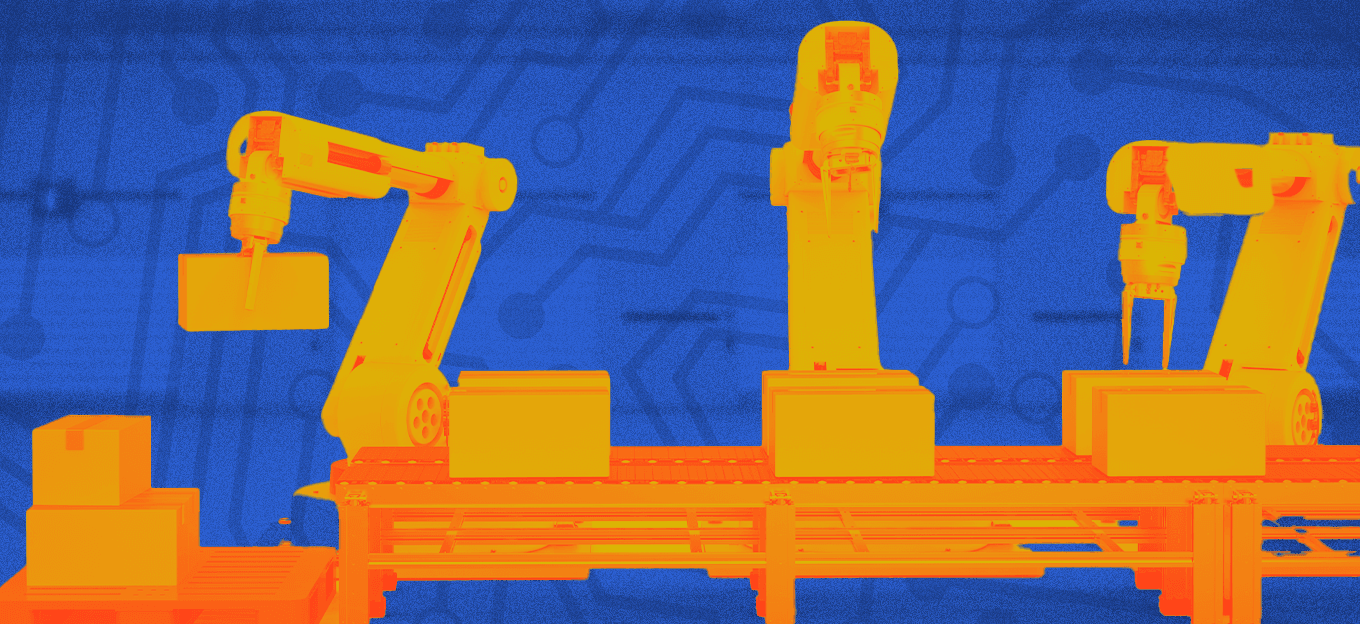Facing Challenges & Accelerating Digital Transformation in Manufacturing
Facing Challenges & Accelerating Digital Transformation in Manufacturing
- Last Updated: December 2, 2024
MachineMetrics
- Last Updated: December 2, 2024



The concept of digital transformation has made promises across multiple industries to enable operational efficiency, agility, and competitiveness with the adoption of new technologies. This was meant to push industries into a new age, enabling increased innovation, resilience in rapidly changing markets, and ultimately increased profits. For the manufacturing industry, this digital transformation revolution has been met with a fair bit of skepticism and doubt, and for good reason. Despite the modern technologies available, such as IIoT, the industry as a whole has struggled to successfully deploy digital solutions and capture the promised value. Let's review these challenges and address how manufacturers can accelerate their digital transformation journey.
'Visualizing the roadmap for your organization will help define what steps you can take to create immediate value. Digital transformation in manufacturing is not coming, it’s here.' - MachineMetrics
The Challenges of Digital Transformation
What is actually holding manufacturers back? There is an array of problems manufacturers must face when adopting digital technologies. Here are four of the most common barriers the industry is up against:
#1: Justifying the Upfront Costs
Outlaying huge sums of your budget, as well as internal resources, is a risky concept if the likely outcome is a failed pilot. Sadly, this has historically been the case with IoT projects. It’s perfectly reasonable to approach digital transformation from an ROI perspective, estimating the potential value derived from projects. You need to be assured of proper measurement so that when a proof of concept is rolled out, there is a clear bar to suggest whether the program has been successful before a substantial investment is made.
#2: Skills Gap
Finding solid skilled labor is a major challenge. Depending on the nature of the project, it is likely that deeply skilled technical employees will need to be hired. Not only will it be difficult to find these key resources, but it will be quite expensive. Further, with shop floor operators and managers, there is training that will be required in order to ensure they are capable of using the newly deployed technologies.
#3: Strain On IT Departments
As our plant operations become more complex and connected, the strain on IT resources may grow significantly. There is more data than ever being generated, and as teams try to wrangle the many different types, the sources from which it is extracted, and the systems that manage it, there will likely be pushback from IT teams.
#4: Data Security
There are two basic reasons behind data security concerns:
- With the number of deployed devices increasing exponentially, the industry risks getting ahead of itself.
- Security solutions were not yet developed at the machine level, as equipment and solutions providers were dealing with on-premise versus in-cloud environments.
Adding to the problem is that many service providers are slow or intermittent at deploying firmware upgrades. This is often due to the push for new and improved core functionality. This is one of the hottest issues in the industry today and one that many are struggling to address.
6 Tips: Accelerating Your Digital Transformation
91 percent of manufacturing operations have increased investment in digital transformation and will continue to do so. This means your competitors are clearly mapping out digital technologies to begin implementing in their operations. It’s your job to determine a faster approach for successfully integrating solutions that can bring your manufacturing operation into the digital era and allow you to capture the many alluring promises of digital transformation. Here are six tips to increase your chances of success, along with the tough questions to ask about your current situation:
#1: Organizational Alignment
You must first be aware of what problems you are facing, and then have the capability to not only solve those problems, but to prepare yourself for greater problems in the journey ahead. Transformation requires buy-in at all levels, from the front office to the shop floor. It’s critical for manufacturers to recognize the important role organizational attributes play in long-term project success and begin discussions about how the odds of project success can be increased by evaluating organizational gaps.
Ask yourself: Where do we stand now? Does my team have the right people in place to implement new technology? Are there project leaders capable of owning this project?
#2: Enhance Communication
The information we need is available, but the hard part is actually applying it. Avoiding an "us vs. them" mentality is critical in this transition stage. It is vital to build trust between everyone involved in the manufacturing process so that problems can be quickly identified, and new solutions can be effectively implemented as a team. Don’t let a lack of communication stand in the way of change.
Ask yourself: Does my team have an environment capable of communication? Can we apply process changes not just from the top down, but from the bottom up?
#3: Reduce Waste
Before you embark on a digital transformation journey, it's important to make the most of your current capabilities. The goal of lean manufacturing is continuous improvement of production processes while eliminating waste and cutting costs. However, setting the stage for a lean process is just the first step. Implementing a system that allows you to maximize your manufacturing productivity results will take your lean model to the next level.
Ask yourself: Are we lean? Do we know what our top areas of waste are? Have we embraced lean manufacturing principles?
#4: Identify Key Performance Indicators
Depending on the systems and processes you have in place on your factory floor, you may face one of two problems:
- You don’t know which key performance indicators (KPIs) you should track to enable you to improve your factory performance.
- You are unable to collect sufficient data to accurately measure the KPIs you want to track.
Having specific KPIs will allow you to assess, analyze, and track the manufacturing processes, as well as evaluate success in relation to goals and objectives.
Ask yourself: What are the key performance indicators that we want to measure as a benchmark for our improvement? Do we have any information now that we can use for this benchmarking?
#5: Acquire the Right Tools
Digital manufacturing will stimulate transformation in every link in the manufacturing value chain, from research and development, supply chain, and factory operations, all the way to marketing, sales, and service. Having tools to measure your efforts for designers, managers, workers, consumers, and physical industrial assets will unlock enormous value and change the manufacturing landscape forever. Of course, every company will need tools to help them optimize their capabilities, but for this job, some tools will make more sense than others. Your KPIs will help you assess which tool will allow you to capture the information you are looking for to best fit your company’s needs.
Ask yourself: What tools do we want to use to measure our efforts? What tools are we already using that we can leverage now? What tools will prepare our employees most?
#6: Digital Connectivity
The cloud can be your best friend, and with security being better than most on-site solution systems, the benefits are tremendous. More companies are developing or moving their workloads to the cloud, in an effort to migrate everything onto the cloud over the next few years. This digitization of data will enable you to deliver competitive advantages in an ever-competitive landscape. Networking your machines and ensuring that all production data can be captured is one of the essential capabilities for real-time analytics.
Ask yourself: Are we ready to digitize assets? Do we have the technical assets in place to capture and store the data?
The Time for Transformation Is Now
Visualizing the roadmap for your organization will help define what steps you can take to create immediate value, where and when to invest time and resources, and most importantly how to advance forward to the next stages of your company’s evolution. Digital transformation in manufacturing is not coming, it’s here. The question is: Are you prepared to take advantage, or will the competition surpass you?
The Most Comprehensive IoT Newsletter for Enterprises
Showcasing the highest-quality content, resources, news, and insights from the world of the Internet of Things. Subscribe to remain informed and up-to-date.
New Podcast Episode

IoT and AI in 2026
Related Articles





